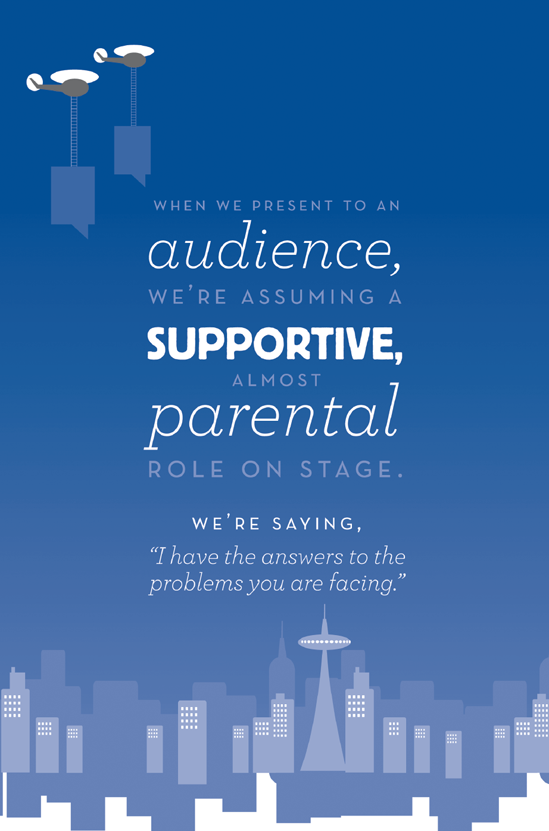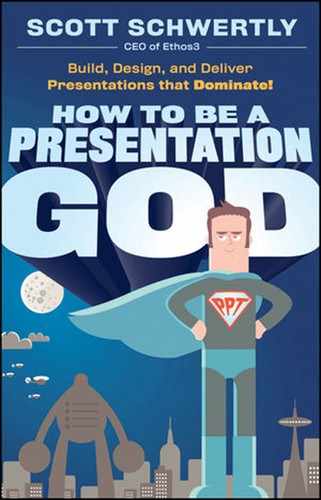13.2. TWITTER AND FACEBOOK
Social media outlets come and go, and the study of social media in the twenty-first century is already a major at certain universities. Far be it for me to eliminate from consideration the multitude of innovative, potentially world-changing web outlets that are burgeoning in our current moment, but we're all best served in almost every scenario to go with the outlets that are most ubiquitous: Twitter and Facebook.
Nearly every modern human being has an account with one or both of these web sites. These sites are used with a varying degree of proficiency and frequency, but from our standpoint, we're really focused on the scale of the opportunity, not the level of engagement.
These outlets are useful for every portion of the presentation process, and the simple act of using them enhances the overall potential of the final speaking event. When I'm preparing a presentation, I almost always solicit feedback and input on both Twitter and Facebook—everyone loves having the opportunity to be an expert—and I generate buzz surrounding my topic as the conversation ensues. I'm often able to solicit some very novel ideas free of charge, which significantly cuts down on my overall brainstorming time and budget. As the presentation comes together, I can solicit feedback and input as often as I like, from nailing down content to achieving the perfect design. If you're really brave, you can post videos of your practice presentations: You'd be surprised how gregarious and insightful your followers can be.
Publicizing appearances through social media helps secure a solid turnout for the actual presentation. It also extends the life of the presentation beyond the confines of the speaking engagement, ultimately increasing the return on invested time and resources. I even use these outlets for posting materials, blog articles, or other resources that expound on concepts I just didn't have time to cover during the presentation. It's an extra service I can provide for audience members that extends the one-on-one touch that began during my presentation. When we present to an audience, we're assuming a supportive, almost parental role on stage. We're saying, "I have the answers to the problems you are facing."

That's a powerful assertion and a compelling basis for a relationship. Why let that connection drop when you put the microphone down? If you've put together a stellar presentation, the audience is likely going to value your input in many different areas. Who knows what opportunities could come about if you were able to transition your presence from the stage to the Internet?
